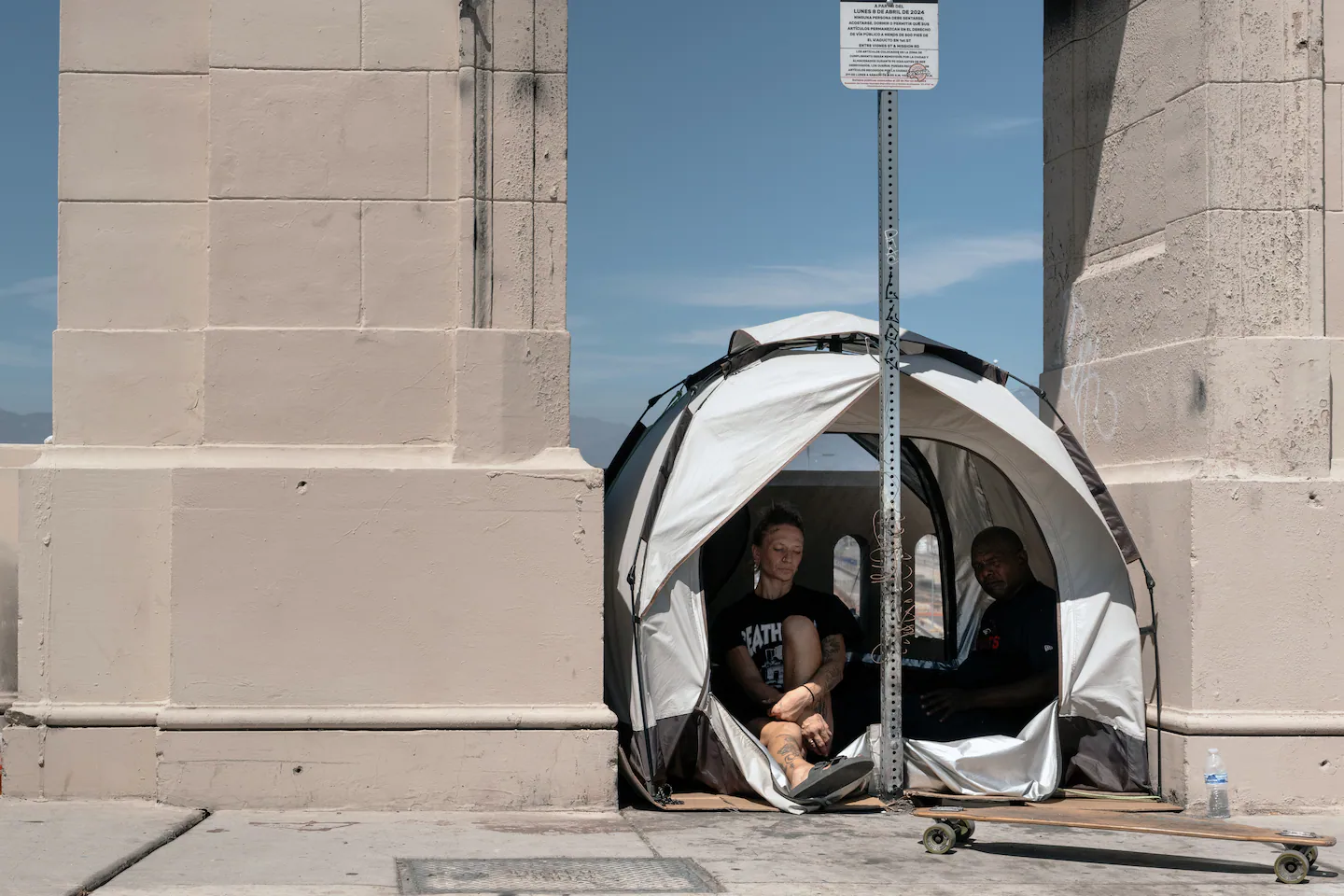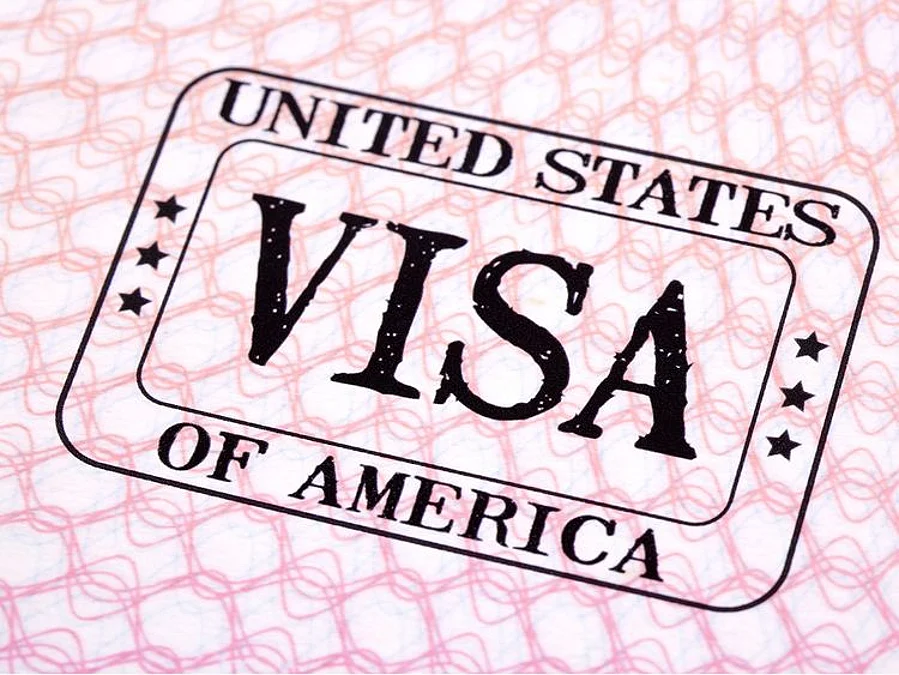
The artificial intelligence chatbot had been trained to mimic empathy, and dozens of people called into the hotline each week with last-ditch appeals for rescue. A 64-year-old who lived on a Santa Monica sidewalk said he needed a wheelchair and a bus ticket to reunite with family in Philadelphia. A mother and her toddler were being kicked out of their motel with $8 and hoped to go to Boston. Another woman said she had just run away from her abuser and wanted help escaping to Virginia. “He’s hunting for me,” she said.
“I’m sorry about your situation,” the automated voice responded, again and again. “Would you like me to add you to the waitlist?”
The calls came 24 hours a day from all over Los Angeles County, where more than 70,000 people are homeless and most live on the streets. By the time the AI transferred callers to a human, the waitlist was full of people with the same hope: that someone, somewhere, might put them on a bus or plane and let them start again.
“How can we help you get off the streets?” John Alle asked, one afternoon, as he responded to a hotline call himself.
Advertisement
It was the problem he’d been trying to solve for years — first as a property manager watching encampments grow outside his buildings in Santa Monica, then as an activist trying to shame the city into action by filming a wave of overdoses and assaults on the downtown promenade, and now as the unlikely architect of a hotline promising free tickets home. The hotline was a two-man operation with no dedicated office space and minimal advertising on social media. Alle and his employee sifted through the waitlist and then packed down people’s tents, paid to wash their laundry, and ferried them to the airport. In its first few months of operation, the program had sent about three people each week out of Santa Monica to reunite with family members in different states.
Advertisement
The same strategy has been gaining traction in cities along the West Coast, where leaders have poured billions into systemic solutions to homelessness only to see progress measured in fractions — modest declines set against historic highs.
In recent months, mayors in San Francisco; San Jose, Calif.; and Portland, Ore., have all embraced programs like Alle’s that promise something cheaper and faster than rehab centers or housing waitlists: a one-way ticket home, arranged for a few hundred dollars. It’s a way to lower numbers overnight, whether as an act of compassion or convenience.
More than 90 percent of Santa Monica’s homeless population came from somewhere else, so Alle decided to send some of those people back to where they had come from. To Alle, the purpose was both rescue and relocation — a way to help them but also himself.
“I’ve got a pacemaker, and it’s not ticking so good,” one man said, after calling the hotline. “I’m not going to survive out here on the street.”
“Don’t worry about luggage,” said another caller, who wanted a bus ticket to Iowa. “It’s just me. I got nothing.”
Then came another call early last month, from a man who introduced himself as Jason Narron, 38. He said he needed to travel home to North Carolina along with his husband.
Advertisement
Narron had moved to Southern California almost a year earlier, believing it was the best place to start over. He’d traveled widely in his former life — business meetings in New York, retreats to Jamaica — and nowhere held the promise of Los Angeles in terms of escape and reinvention. He arrived after a decade of methamphetamine addiction in North Carolina and checked into a rehab facility with his husband, Alterrick Hooker, 26. Their insurance coverage ran out after a few months, so they moved into a weekly pod motel. Soon they were out of money, and the nearby shelters were either full or restricted.
“Getting desperate. Can you help?” Narron asked his mother, Pat, one day last spring. She sent him a little money, and he got a tent.
Narron and Hooker had bounced between encampments for the last few months. They were chased out of Palisades Park, robbed in Venice and propositioned on Skid Row before finally landing on a tiny patch of sidewalk wedged between two pillars of the First Street Bridge. The bridge served as a natural lookout. They could see trouble coming from a few blocks away, and it was always coming.
Some nights, their relationship felt less like a marriage than a partnership of necessity — two soldiers trading shifts. They could never leave the tent unguarded. One did laundry while the other kept watch. One slept through the night while the other listened, waited, and counted the hours until sunrise. It was a life that required constant vigilance, and methamphetamine was the caffeine of the streets: cheaper than coffee, stronger, and longer-lasting. A $4 hit could keep someone wired for 16 hours. Every day was a test of their newfound sobriety.
Advertisement
Pat Narron, 80, knew she couldn’t afford to support him forever, but she kept sending $10 or $20 even as relatives asked her to stop. Her son had been a childhood prodigy on piano, an academic standout in the tiny town of Smithfield, N.C. By 25, he had his own real estate business and a house in the suburbs.
“He could sell ice to an Eskimo,” Pat remembered, but her son also started descending into stretches of depression that confounded her. She wondered whether Narron’s struggles had begun when he discovered he’d been adopted, or when he came out as gay amid the prejudices of the rural South. But soon he was calling from jail, confessing to addiction, and then writing from Los Angeles as her savings and patience ran short.
“It’s bad here,” Narron told her, in early August. “We’re thinking it’s time to go home.”
This article originally appeared in The New York Times.



